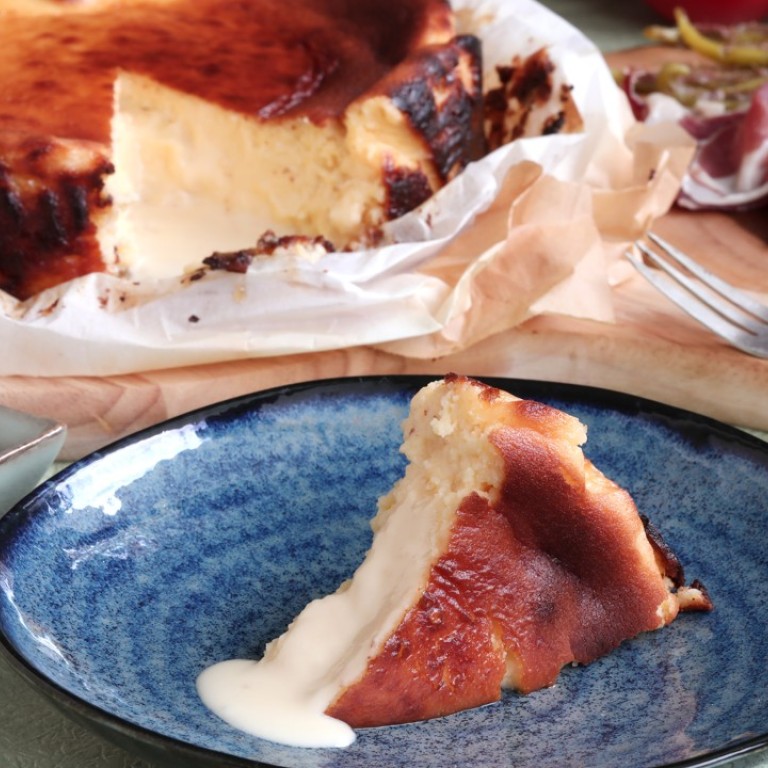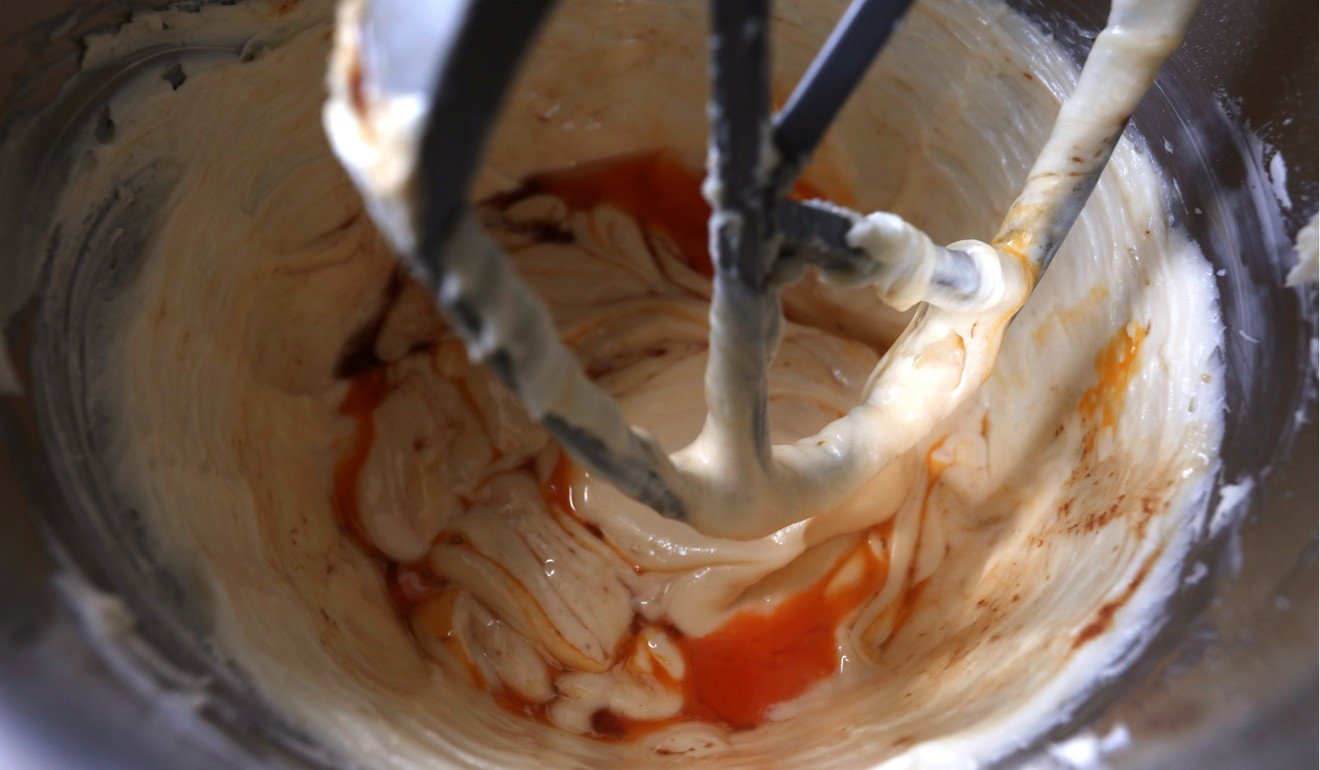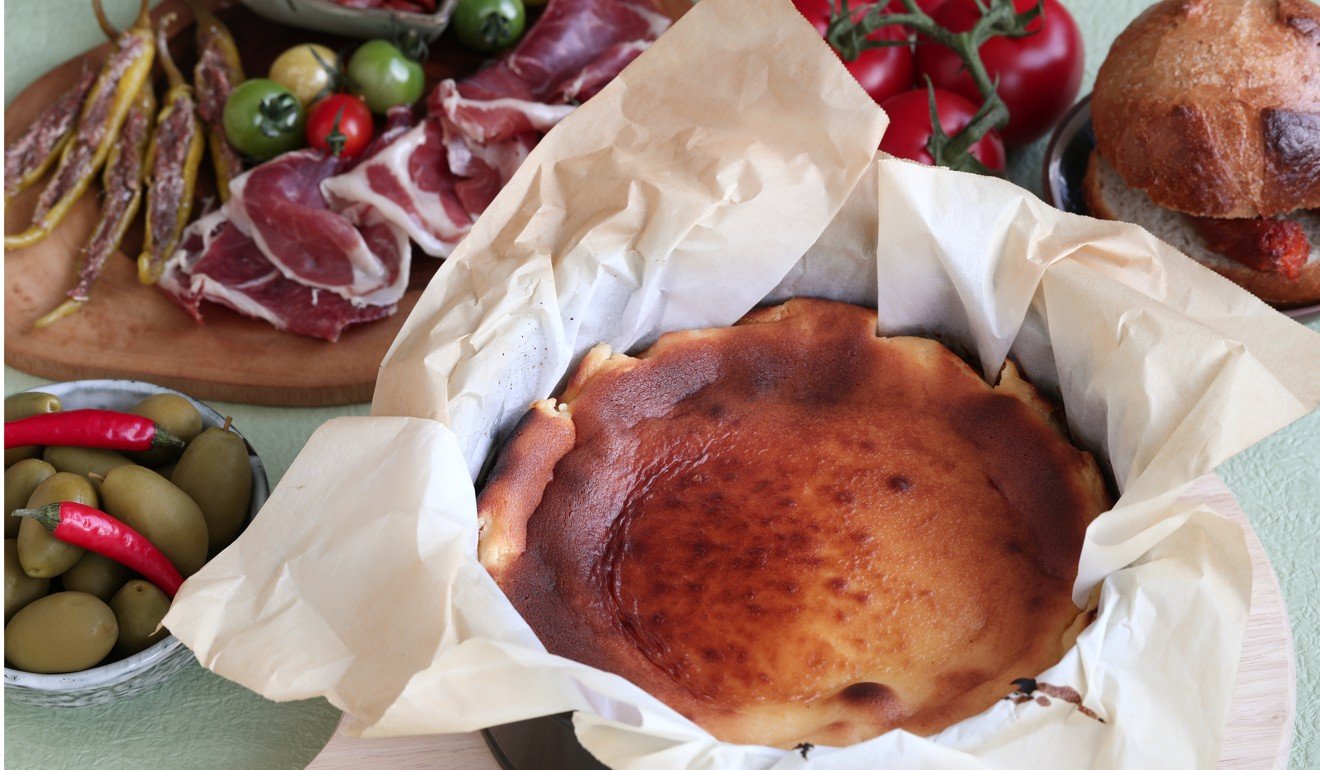
How to make cheesecake – New York style versus Basque version
A light and gooey Basque version or heavy and dense New York style – choose your own cheesy adventure
Basque cheesecake
The ingredients listed in the recipes I found for Basque cheesecake, including one that says it’s the official version, were the same: 1kg of cream cheese, seven eggs, a high proportion of cream and a small amount of flour. Because this would make a restaurant-size cheesecake that serves at least a dozen people and is best eaten the day it’s made (if refrigerated overnight, it will become firm), I halved the ingredients.
Done rigidly, I’d have to use 3½ eggs – three eggs plus one half of a fourth egg (whisk the egg, weigh it, then divide it in two) – but using only three eggs has worked fine. You can leave out the flour for a gluten-free cheesecake (I’ll admit, I realised this by accident, when I forgot to add the flour during recipe testing). I experimented with adding vanilla extract and lemon zest but I think it tastes best plain. I also decreased the amount of sugar, but if you like your desserts sweeter, use up to 200 grams.
The main problem I had was in baking it. Too long and the cheesecake becomes firm, not gooey (although some people prefer it that way), and if the oven temperature is too low (most of the recipes advise baking at 200 degrees Celsius) you don’t get the rustic-looking burnt top. So I crank up the temperature to 250 degrees, let it bake for 15 minutes, then lower the heat to 200 degrees and let it finish cooking.
The cream cheese must be at room temperature, or you can’t beat it properly. It’s not necessary to line the pan with parchment paper but, as with the burnt top, it gives the cheesecake a more rustic look.
500 grams plain (unflavoured) Philadelphia cream cheese, at room temperature
110 grams sugar
½ tsp fine sea salt
3 large eggs, at room temperature
250ml cream, at room temperature
5 grams plain (all-purpose) flour (optional)
1 Preheat the oven to 250 degrees. Spray an 18cm springform pan with pan coating, then press a large sheet of parchment paper into the pan to line the bottom and sides, leaving some overhang. Pleat the parchment paper as needed so it lies somewhat flat against the sides of the pan.

2 Use an electric mixer on medium speed to beat the cream cheese with the sugar and salt until smooth and light. Occasionally scrape the bowl and beater with a spatula to remove any lumps. With the mixer speed on low, add the eggs one at a time, letting each incorporate fully before adding the next. Scrape the bowl and beater with a spatula and mix again until smooth. Stir in the flour and scrape, then with the mixer speed on low, slowly add the cream. Scrape again then slowly stir until smooth.
3 Pour the mixture into the prepared pan and bake at 250 degrees for 15 minutes, or until it starts to brown on top. Turn the pan around in the oven then lower the heat to 200 degrees. Continue to bake for 20 to 25 more minutes. The cheesecake will be dark brown in spots and will rise in the pan. It will be very wobbly when you gently shake the pan, and will look undercooked; it will firm up when cooled. Take the cheesecake from the oven and let it cool to room temperature. When you slice it into wedges, it will be slightly gooey at the centre. If you chill it, the cheesecake will become firmer.

New York-style cheesecake
This heavy, dense version is what many Americans think of when they hear the word “cheesecake”. Unlike Basque cheesecake, this one is best chilled, so I make a much larger version. It’s baked in a water bath so the surface is smooth and pale.
Use whatever type of packaged sweet biscuits you prefer. I like to use ginger biscuits, but you can also use shortbread, digestive biscuits or cream-filled sandwich cookies (such as Oreos).
150 grams packaged biscuits
About 50 grams unsalted butter
1kg plain (unflavoured) Philadelphia cream cheese, at room temperature
220 grams granulated sugar (add up to 400 grams if you want a sweeter cheesecake)
1 tsp fine sea salt
5 large eggs, at room temperature
10ml pure vanilla extract
150 grams sour cream, at room temperature
1 Preheat the oven to 180 degrees. Melt the butter and cool to tepid. Put the biscuits in a food processor and process until they are fine crumbs. Mix in the butter so the crumbs hold their shape when you squeeze them together but are not oily. If needed, stir in more melted butter. Firmly press the mixture in a thin layer into the bottom and slightly up the sides of a 23cm-25cm springform pan and bake at 180 degrees for 10 to 15 minutes, or until firm. Cool to room temperature. Securely wrap the base of the pan in aluminium foil, letting it come halfway up the sides (this is to prevent water from leaking in when baking the cheesecake in the water bath).
2 Use an electric mixer to beat the cream cheese with the sugar and salt until smooth and light. Occasionally scrape the bowl and beater to remove any lumps. Turn the mixer speed to low and add the eggs one at a time, letting each incorporate fully before mixing in the next. Scrape the bowl and beater to remove any lumps. With the mixer speed on low, stir in the sour cream and vanilla extract. Pour the mixture into the springform pan.
3 Put the pan into a large, deep baking tray and place it in the oven. Pour water into the baking tray so it comes about halfway up the sides of the pan. Bake the cheesecake at 180 degrees for about 20 minutes then turn it around in the oven. Continue to bake until the cheesecake is just set (about 45 minutes to an hour in total): it will be matte on the surface and the centre 3cm will be a little wobbly.
4 Take the cheesecake from the water bath and let it cool to room temperature. Chill for several hours before slicing into wedges.

